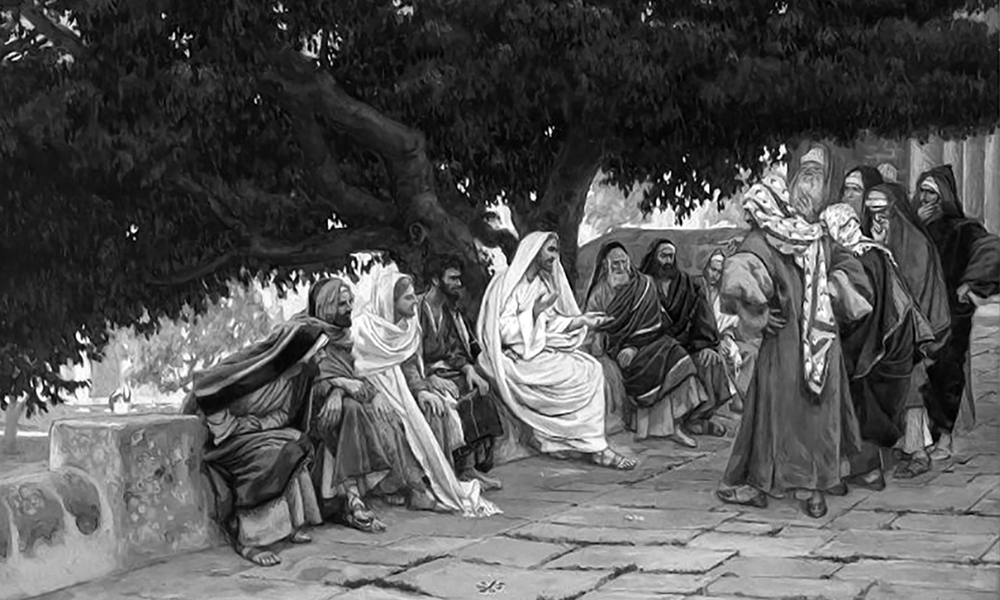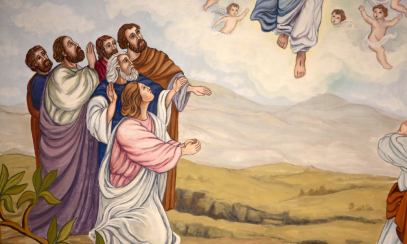
The Sadducees
Theology 101 is taking a peek behind the scenes of some of the prominent figures, groups and events referenced in the New Testament. The goal is to provide greater context for the drama of salvation, which the Scripture communicates to us.
Some Sadducees, who say there is no resurrection, came to him and put this question to him, saying, “Teacher … seven brothers … married a woman … left no descendants. … At the resurrection whose wife will she be? For all seven had been married to her.” Mk 12:18-23
What an interesting question the Sadducees posed to Jesus! A group who did not believe in resurrection questioning Jesus about the marital status of resurrected persons. Who were the Sadducees? What were they hoping to accomplish with this question and why?
THE ELITE
The Sadducees were a religious party made up primarily of high priests, aristocratic families and wealthy merchants. They were truly the elite of Jewish society, and they controlled Judaism’s two most important institutions: the Temple in Jerusalem and the Sanhedrin, the governing body for both religious and civil issues. They also enjoyed the military backing of the Roman rulers of Palestine.
THE RIVALRY
Although powerful, the Sadducees were not without rivals. They faced a near-constant conflict with the Pharisees. Both groups claimed authority over Jewish society, but the sources of their authority differed greatly. The Sadducees asserted that their authority came from their birth and socioeconomic status. In contrast, the Pharisees argued that true authority came from piety and education. The Sadducees were also quick to incorporate Hellenism into their lives, whereas the Pharisees were far more cautious and selective when it came to assimilating aspects of Greek culture.
The factions clashed over theology as well. Unlike the Pharisees, the Sadducees emphasized the written Torah and denied the equality of the Oral Law, the body of post-biblical legal traditions. In fact, they considered the Oral Law as somewhat irrelevant. They were conservative, literal interpreters of the written Torah. The Sadducees believed everyone was the master of her or his own destiny. Free will was unrestrained and God did not intervene in the personal lives of people. They rejected the supernatural and belief in angels, demons, heaven, hell and, again, resurrection. To them, the soul perished with the body – period, end of story. That said, they took ritual purity quite seriously. They did not want to be disqualified from leading the Temple services, which also happened to generate significant income.
THE FALL
The existence of the Sadducees as a viable group was intimately and inextricably tied to the Temple in Jerusalem. When the Romans destroyed the Temple in 70 A.D., the Sadducees dissolved as a party. Their passing was not particularly mourned. Their wealth, arrogance and willingness to collaborate with the Roman rulers of Palestine made them very unpopular with the common people of Jewish society. Perhaps this is part of the reason the group quickly faded from history.
THE SADDUCEES AND JESUS
The one thing the Sadducees and Pharisees could agree on was that Jesus was a problem. For one thing, Jesus taught that the beliefs of the Sadducees were simply wrong. In answer to the Sadducees’ question that began this article, Jesus said they were “greatly misled” because they did not know the Scriptures or the power of God. What’s more, Jesus contradicts their beliefs directly by referencing the angels in heaven and affirming resurrection in his reply. (Mk 12: 24-27) Of course, Jesus’ popularity, and the people hailing him as Messiah, also risked provoking Rome and, thereby, threatened the Sadducees’ warm relationship with the Roman rulers of Palestine.
The Sadducees also opposed Jesus because he “attacked” them when he cleansed the Temple. The Sadducees raised tremendous amounts of money via a “Temple sacrifice scheme” whereby they basically bilked the people by charging fees to replace livestock deemed unsuitable by them and to exchange wrong currency for Temple currency. So, not only did Jesus’ action shut down their operations for that day, it put their whole system in jeopardy. As this system funded their lavish lifestyles and reinforced their grip on power, it is no wonder the Sadducees wanted Jesus out of the picture.
Sources:
“The Sadducees.” Britannica.
“Pharisees, Sadducees, and Essenes.” Jewish Virtual Library.
Mike Nappa. “Who Were the Sadducees in the Bible? What Were Their Beliefs?”



